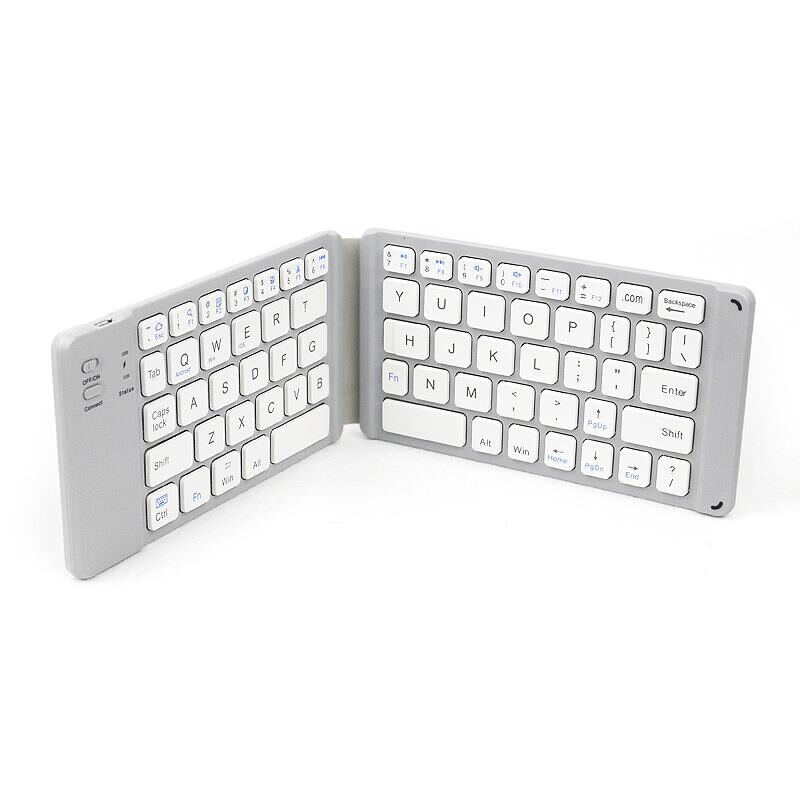Email format error
Email cannot be empty
Email already exists
6-20 characters(letters plus numbers only)
The password is inconsistent
Email format error
Email cannot be empty
Email does not exist
6-20 characters(letters plus numbers only)
The password is inconsistent

News

66-Key Keyboard vs 8-Key Keyboard: A Comprehensive Comparison
In the ever-evolving world of keyboards, enthusiasts and casual users alike often find themselves pondering the best choice for their needs. Two intriguing options that frequently come up in discussions are the 66-key keyboard and the 8-key keyboard. While these two types of keyboards might seem vastly different, understanding their unique features and applications can help you make an informed decision. In this blog, we'll dive deep into the world of 66-key keyboards and 8-key keyboards, exploring their functions, advantages, and ideal use cases.
The 66-Key Keyboard: A Balanced Option
What is a 66-Key Keyboard?
The 66-key keyboard is a compact yet feature-rich option that balances functionality and size. It typically includes all the essential keys found on a standard full-sized keyboard, minus the number pad and some extra keys. This makes it a popular choice for those who want a more portable and streamlined keyboard without sacrificing too much functionality.
Advantages of the 66-Key Keyboard
Compact Design: The 66-key keyboard is smaller than a traditional full-sized keyboard, which makes it a great option for those with limited desk space. Its compact size also makes it more portable, perfect for those who are always on the go.
Ergonomics: Despite its smaller size, the 66-key keyboard is designed to be comfortable to use. The key placement is optimized to reduce strain on your hands and wrists, which can be a significant advantage for long typing sessions.
Enhanced Portability: With its smaller footprint, the 66-key keyboard is easy to transport. Whether you're a student, a remote worker, or someone who travels frequently, this keyboard is a convenient option.
Customizable Layout: Many 66-key keyboards offer customizable key switches and backlighting options, allowing you to personalize your typing experience to suit your preferences.
Ideal Use Cases for the 66-Key Keyboard
Office Work: The 66-key keyboard is perfect for office environments where space is at a premium. Its compact size allows you to fit it comfortably alongside other workspace essentials.
Gaming: For gamers who value both functionality and space efficiency, the 66-key keyboard offers a great balance. It provides all the essential keys needed for gaming while keeping your setup neat and organized.
Travel: If you're a frequent traveler, the 66-key keyboard is a practical choice. Its compact design makes it easy to pack and carry, ensuring you have a reliable typing solution wherever you go.
The 8-Key Keyboard: Minimalist and Specialized
What is an 8-Key Keyboard?
As the name suggests, an 8-key keyboard is an extremely minimalistic input device with only eight keys. This type of keyboard is designed for specific applications where simplicity and efficiency are key. While it may not be suitable for general typing tasks, it excels in specialized roles.
Advantages of the 8-Key Keyboard
Simplicity: The 8-key keyboard is all about simplicity. It eliminates the need for unnecessary keys and functions, focusing solely on the essential inputs required for its intended purpose.
Specialized Applications: This keyboard is often used in niche applications, such as programmable macro keys for specific software or hardware. It’s perfect for users who need to execute a series of commands quickly and efficiently.
Space Efficiency: With only eight keys, this keyboard takes up minimal space, making it ideal for environments where desk space is at a premium.
Customizability: Many 8-key keyboards are highly customizable, allowing users to assign different functions or macros to each key. This flexibility can be incredibly useful for specific workflows or tasks.
Ideal Use Cases for the 8-Key Keyboard
Programming and Development: Developers who use macros or shortcuts extensively may find the 8-key keyboard to be a valuable tool. It allows them to quickly execute complex commands with minimal effort.
Gaming: In certain gaming setups, an 8-key keyboard can be used to control specific functions or macros, providing gamers with quick access to essential commands.
Specialized Hardware: For devices that require custom input methods, such as industrial controls or specialized software, the 8-key keyboard can be tailored to meet specific needs.
Comparing the 66-Key and 8-Key Keyboards
Functionality
The 66-key keyboard offers a broad range of functions suitable for general use, including typing, gaming, and office work. It provides a familiar layout with additional features such as arrow keys and function keys. In contrast, the 8-key keyboard is designed for very specific tasks and lacks the general-purpose keys found on the 66-key model.
Size and Portability
The 66-key keyboard strikes a balance between size and functionality. It’s compact enough to be portable while still offering a comprehensive set of keys. On the other hand, the 8-key keyboard is extremely compact, making it highly portable and easy to fit into tight spaces, but it sacrifices versatility for its minimalist design.
Customizability
Both keyboards offer a degree of customizability, but in different ways. The 66-key keyboard often includes customizable backlighting and switch options, allowing users to tailor their typing experience. The 8-key keyboard, however, excels in its ability to assign multiple functions to its limited number of keys, making it highly adaptable for specific applications.
Ideal Users
The 66-key keyboard is well-suited for users who need a versatile and portable typing solution. It caters to a wide range of activities, from everyday typing to gaming and office work. The 8-key keyboard, however, is ideal for users with specialized needs who require a streamlined and customizable input device for specific tasks.
Conclusion
Choosing between a 66-key keyboard and an 8-key keyboard ultimately comes down to your specific needs and preferences. The 66-key keyboard offers a well-rounded balance of functionality and portability, making it a versatile choice for a variety of applications. Meanwhile, the 8-key keyboard shines in its simplicity and customization, making it perfect for niche uses where efficiency and space-saving are paramount.
Whether you're a gamer, a programmer, or simply someone looking for a more efficient way to interact with your computer, understanding the differences between these two types of keyboards can help you make the best choice for your needs. Each has its strengths and ideal use cases, and by considering what you value most in a keyboard, you can find the perfect fit for your unique requirements.

